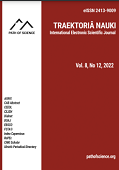The Interaction Effect of Biographical Fertilizer, Organic Fertilizer and Inorganic Fertilizer on the Growth and Results of Red Onion (Allium ascalonicum L.) in Dry Land
The Interaction Effect of Biographical Fertilizer, Organic Fertilizer and Inorganic Fertilizer on the Growth and Results of Red Onion (Allium ascalonicum L.) in Dry Land
Author(s): Darwis Darwis, Aluh Nikmatullah, Muhammad SarjanSubject(s): Agriculture, Methodology and research technology
Published by: Altezoro, s. r. o. & Dialog
Keywords: shallots; biological fertilisers; organic fertilisers; inorganic fertilisers;
Summary/Abstract: Shallot cultivation in dry land must integrate measures to improve the soil's physical, chemical and biological properties and not rely on using inorganic fertilisers with high enough doses. This study aimed to determine the interaction effect between natural fertilisers with organic fertiliser doses and inorganic fertiliser doses on growth and yielded onion (Allium ascalonicumL.) on dry land. This research was conducted on dry land in Labuhan Lombok Village, Pringgabaya District, East Lombok Regency, NTB, from June to September 2022. The design used is Factorial Randomized Block Design (RBD) 3 factors: doses of organic fertilisers, doses of biological fertilisers, and doses of inorganic fertilisers. The quantity of organic fertiliser (O) consists of 2 levels, namely 5 tons/ha (O1) and 10 tons/ha (O2). The biological fertiliser treatment consists of 2 groups: without natural fertiliser (H1) and with biological fertiliser 1 kg/ha biological fertiliser (H2). In comparison, the dose of inorganic fertiliser consists of 3 levels, namely 100% dose (D1), 75% dose (D2) and, 50% dose (D3), 25% dose (D4). Each treatment was combined and added with one control to obtain 17 treatments. Parameters observed included a) Shallot plant growth, including plant height, number of leaves per clump (strand) and number of tillers per clump (saplings); b) Shallot plant yields included wet tuber weight and dry tuber weight. The data obtained were analysed using analysis of variance (ANOVA). For natural treatment factors, a further test would be carried out with Duncan's Double Distance Mean Difference Test with a level of 5%. The interaction of biological fertilisers with doses of organic and inorganic fertilisers increased the growth and yield of shallots in dry land. Organic fertiliser doses of 5 t/ha can reduce the dosage of inorganic fertilisers by 50% and, if accompanied by biological fertilisers, can reduce the use of inorganic fertilisers by up to 75% of the recommended dosage.
Journal: Traektoriâ Nauki
- Issue Year: 9/2023
- Issue No: 4
- Page Range: 3001-3007
- Page Count: 7
- Language: English

